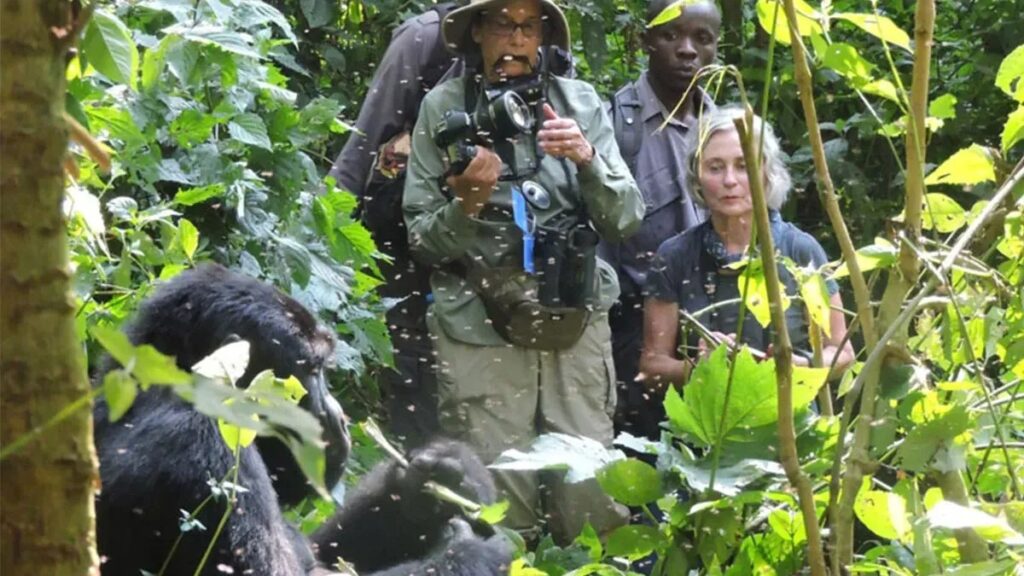- EXPERT'S HELP
- +256789210067
- +256200955001
- info@kenlinktours.com
Gorilla trekking duration varies; it's moderately challenging, requiring reasonable fitness
Gorilla trekking duration varies; it’s moderately challenging, requiring reasonable fitness
Gorilla Trekking Duration – Gorilla trekking offers a rewarding activity suitable for all fitness levels. However, varying trail difficulties exist. It’s crucial to assess your fitness before embarking on any trek or hike. Even if you’re less fit, enjoyable experiences are still possible, particularly on easier trails.
Both Bwindi Forest National Park in Uganda and Volcanoes National Park in Rwanda feature a range of gorilla trekking trails, catering to diverse fitness levels. With numerous options available, you’re bound to find a trail suited to your abilities.
How Difficult Or Easy Is Gorilla Trekking?
Gorilla trekking in Uganda presents physical challenges worth considering before embarking on the adventure. While generally manageable for healthy individuals, several factors warrant attention.
Altitude poses an initial challenge, with thinner air at higher elevations. Take heed to pace yourself and adjust to the conditions accordingly.
Moreover, navigating through the mountainous terrain and dense vegetation of Bwindi Impenetrable National Park demands a degree of stamina.
Additionally, the duration of the trek varies greatly; encounters with gorillas may occur swiftly or after several hours of hiking. Flexibility and patience are essential.
Overall, with awareness of these challenges and a moderate level of fitness, you can enjoy the experience to the fullest. Have a wonderful trek!
How Long Does A Trek To See Gorillas Take?
A gorilla trek typically lasts between 1 to 6 hours, varying based on the gorillas’ last sighting location. This duration encompasses the trek from the starting point, the time spent observing the gorillas, and the return journey to the National Park’s meeting point.
For the Gorilla Habituation Experience, expect a minimum of 5 hours, inclusive of the trekking to and from the gorilla habitat.
Can I Get Help If I Get Any Problem During Gorilla Trekking?
Pre-booking arrangements can include provisions for porters, sedan chairs, and trekking poles, along with the option to join shorter and simpler hikes with other groups. While adding to the expedition’s cost, utilizing porters to carry a sedan chair can greatly benefit individuals in need of assistance.
For those concerned about terrain difficulty, trekking during the dry season is advisable. The rainy season, spanning from June to September and December to February, may result in muddy ground conditions, making trekking more challenging.
How Fit Should I Be For Gorilla Trekking
For individuals with reasonable fitness levels, most gorilla trekking and hiking trails should pose no significant challenges. However, if you’re not accustomed to regular exercise, consider gradually improving your fitness before embarking on lengthy or strenuous trails.
For those who are highly fit, virtually any trekking or hiking trail should be manageable. Nevertheless, it’s prudent to conduct thorough research on the trail beforehand to ensure it aligns with your capabilities.
Regardless of your fitness level, trekking and hiking offer excellent opportunities to engage in physical activity while enjoying the outdoors. So, seize the chance to explore and discover the wonders of the world around you!
Preparing For Gorilla Trekking
eing physically prepared is crucial for a successful hike. Here are some tips to ensure you’re ready:
Equip yourself appropriately with suitable clothing, footwear, a backpack, water, and snacks for the hike’s conditions.
Maintain good physical fitness through regular exercises like walking or jogging to build endurance.
Understand your abilities and start with easier hikes before progressing to more challenging ones.
Listen to your body and take breaks when needed. Stay hydrated and rest to prevent fatigue and soreness.
Carry a first aid kit and know how to seek help in case of emergencies.
Familiarize yourself with the terrain by reviewing trip notes and practicing walks simulating similar conditions. Embrace hills as opportunities for training, and consider trekking during the dry season (June to September and December to February) to avoid muddy terrain. Keep in mind that rain can enhance photography by clearing dust from the air, resulting in sharper images.











